A Hairy Footed plumipes Bee. In Ecuador this hairy footed plumipes bee was so busy foraging on flowers and making a nest in old walls.
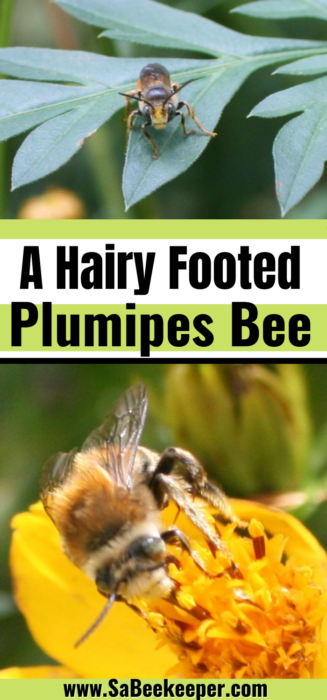
A Hairy Footed Plumipes Bee.
I have been following this bee for a while now here on the farm in Ecuador South America. Saw her making a hole in old walls and digging.
The wall with holes in.
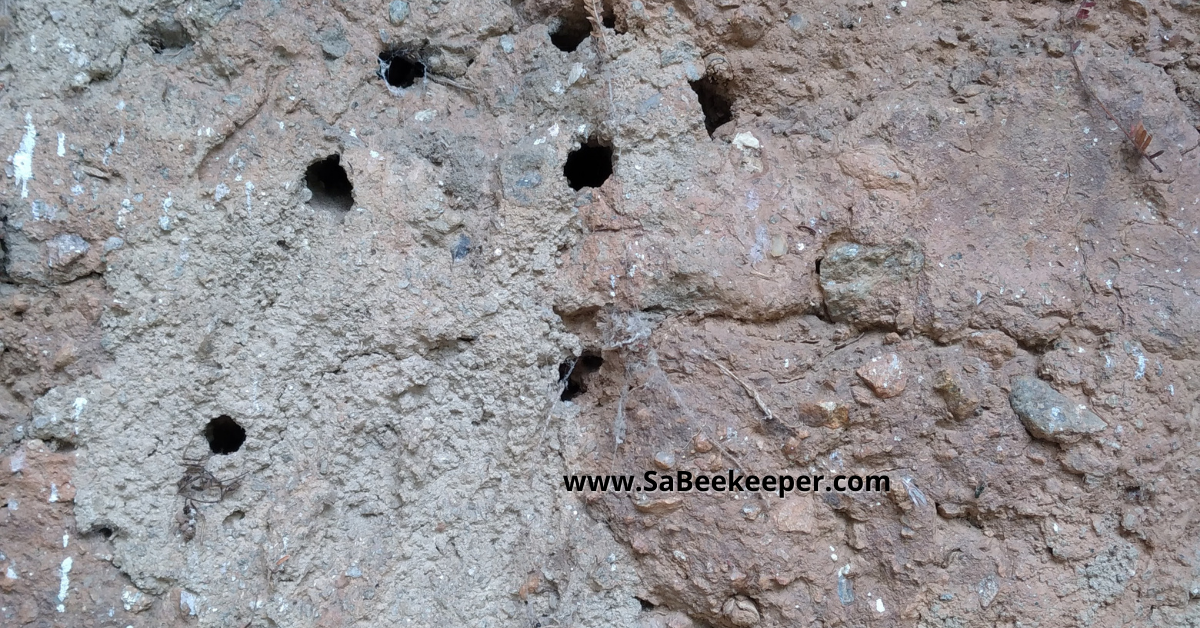
You can view the video on this link.
Foraging on cosmos flowers for a while now.
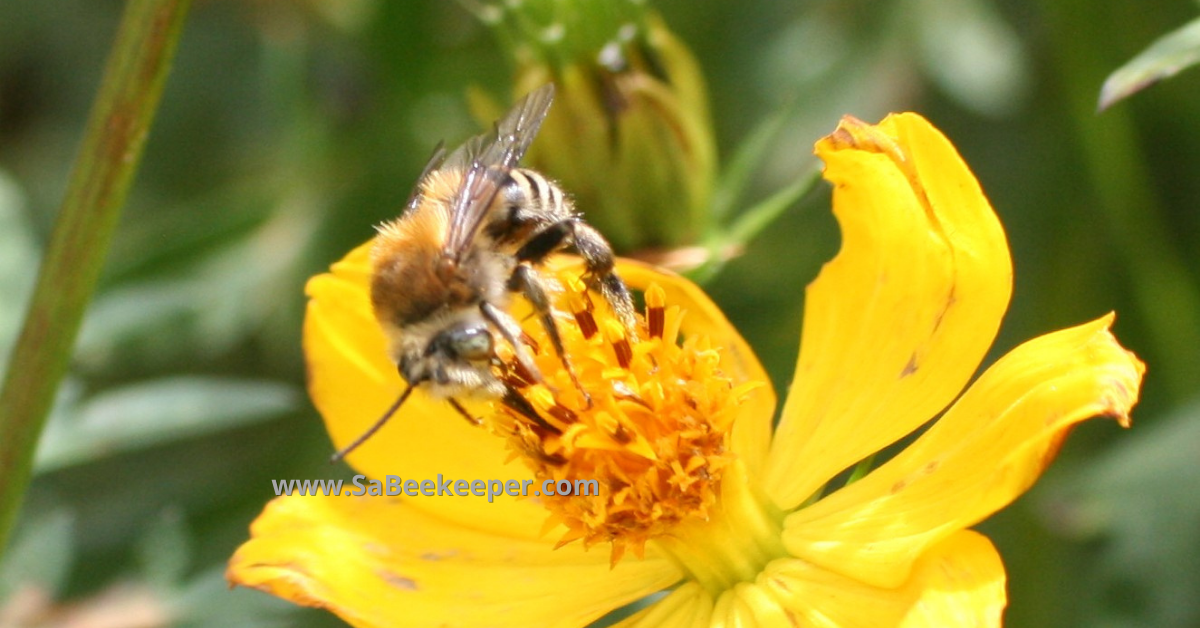
This bee is family of Apidae bee, and species is a Plumipes bee. Has hairy legs and huge blue grey eyes that you could see on video and photos.
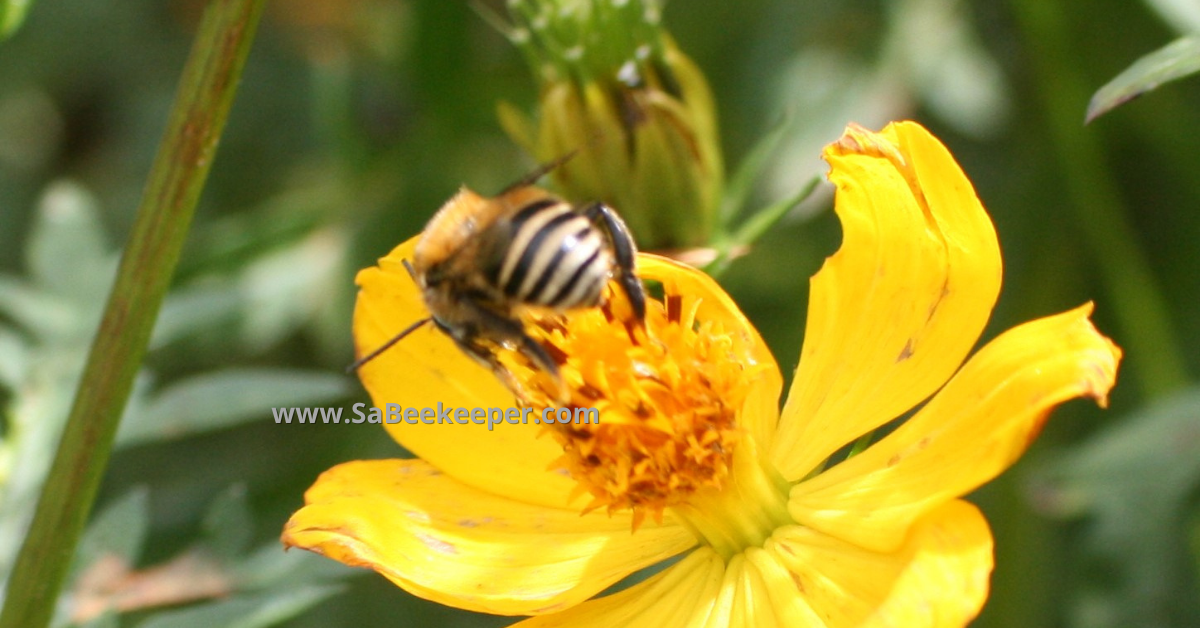
Mostly this species has been found in UK, but now I think that this is a South American species. ( Was calling her a South American bumblebee) which she is family off.
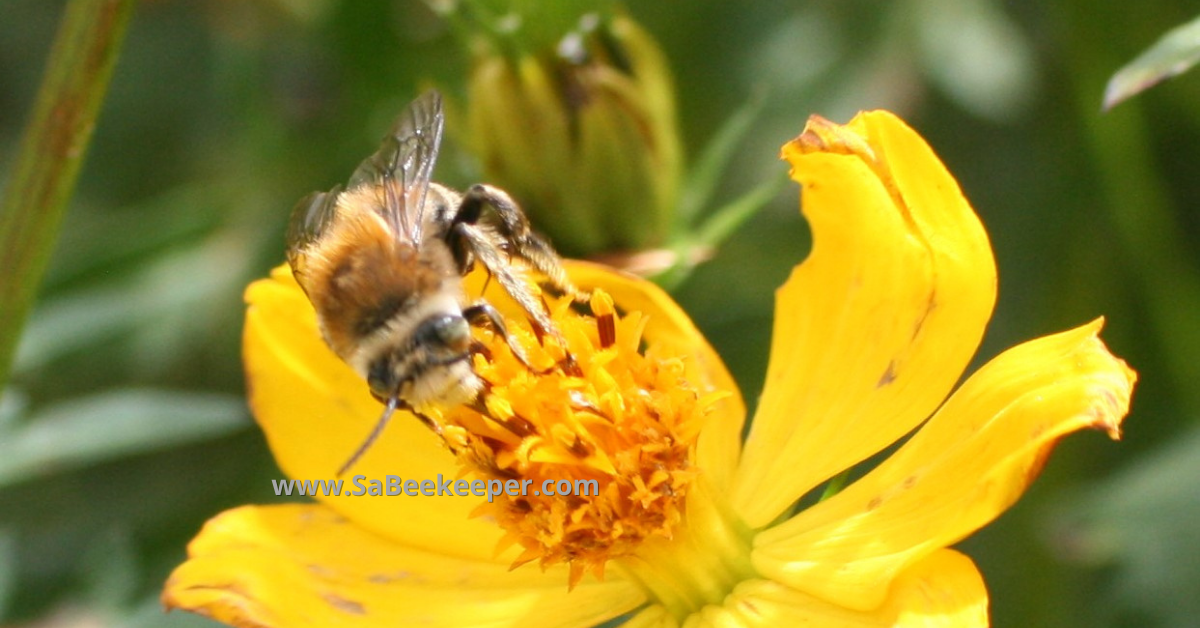
The hairy-footed flower bee (Anthophora plumipes) is a species of bee belonging to the family Apidae.
Subfamily are
. Apinae bee
Such as honey bee, bumblebee and orchard bee as well as a stingless bee.
. Nomadinae bee
Such as the Cuckoo Bee
. Xylocopinae bee
Carpenter Bee
These apidae family of bees are mostly social but solitary bees. So friendly that she landed on a leaf in front of me and just looked at me. Photogenic.
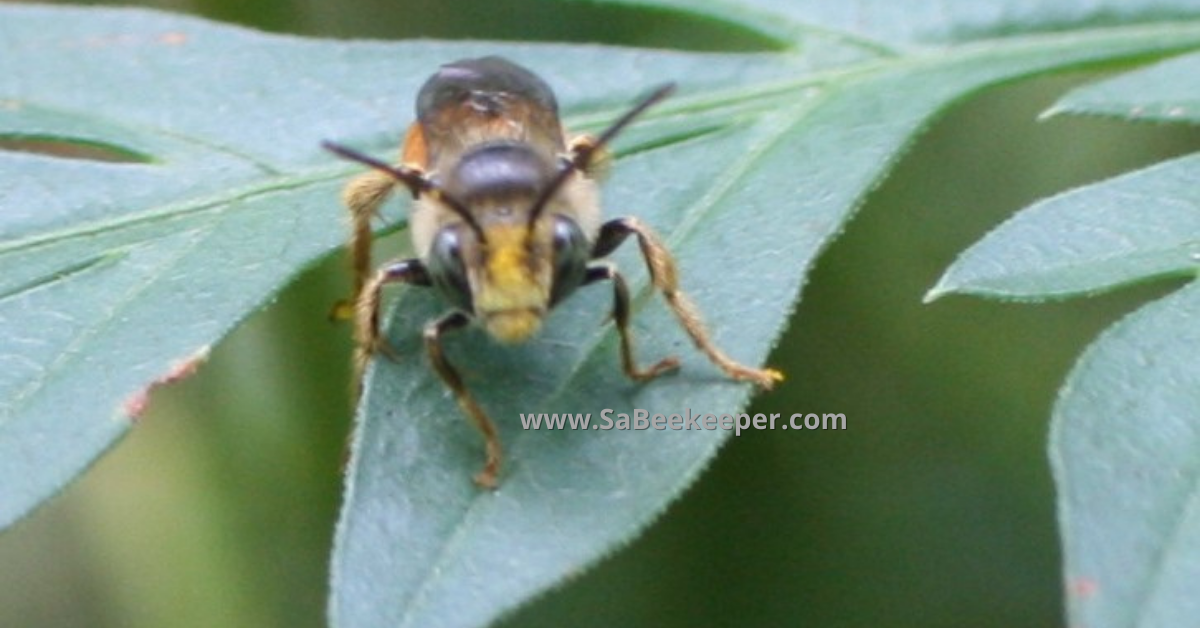
They nest in holes in mud walls or old mortar. The old wall is full of holes of new and old nesting places. Collecting pollen and nectar to make her nest cells in there.
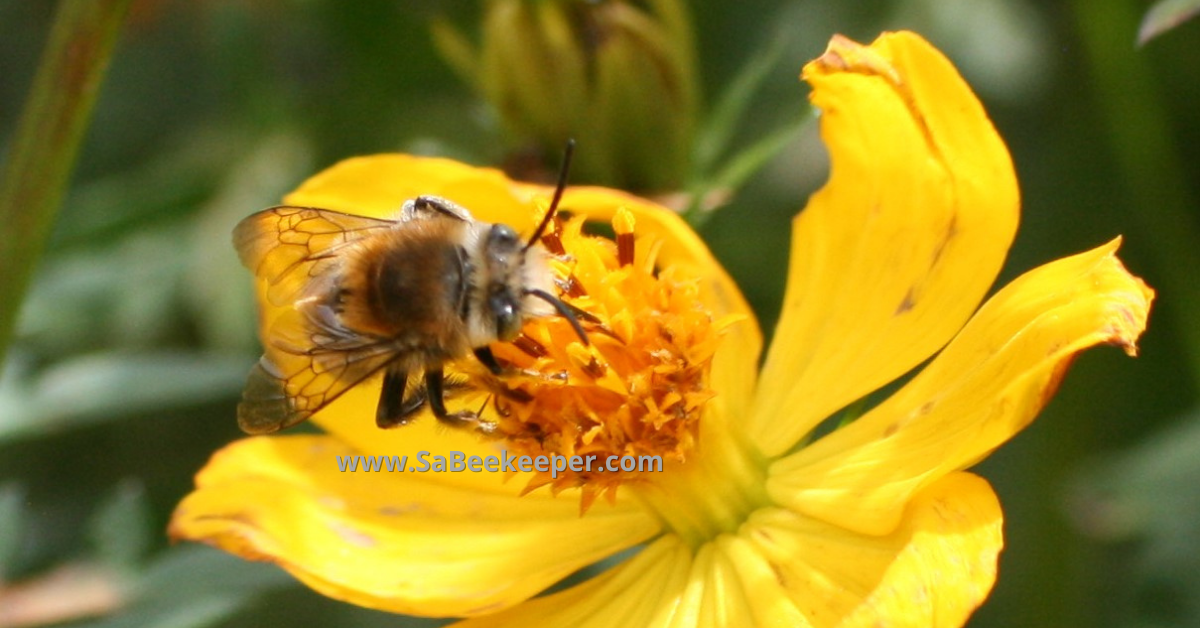
The bee has hairy legs, and a odd snout like trunk on her face. She is friendly and there are a few of them on the farm.
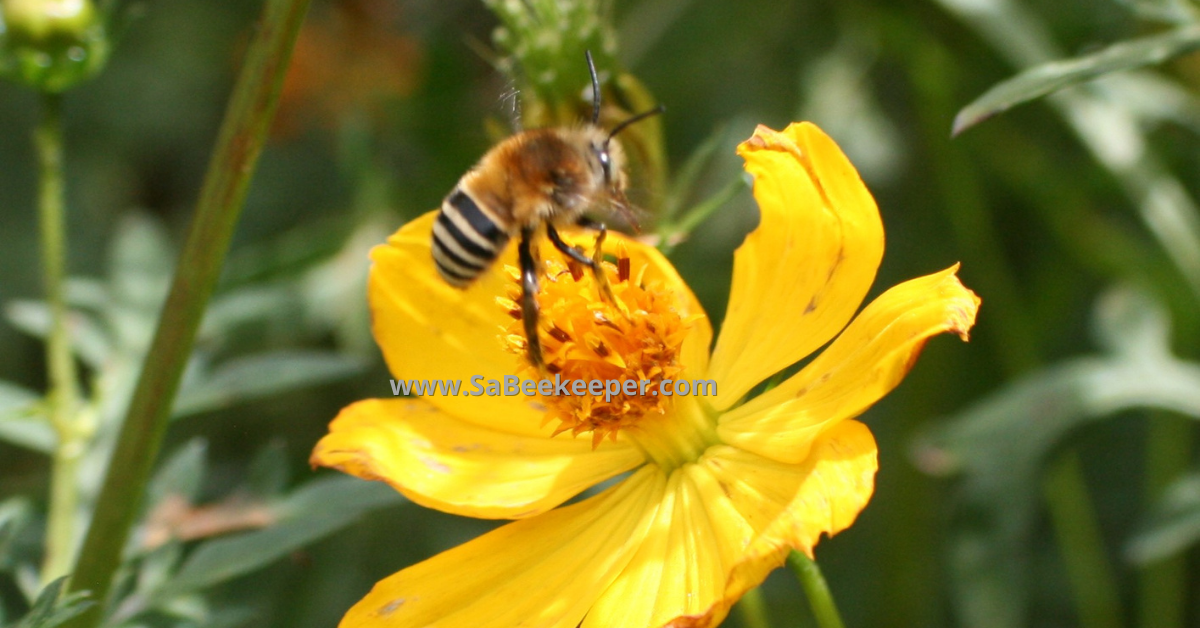
Notice those red hairy upper body and her large eyes and those antennas.
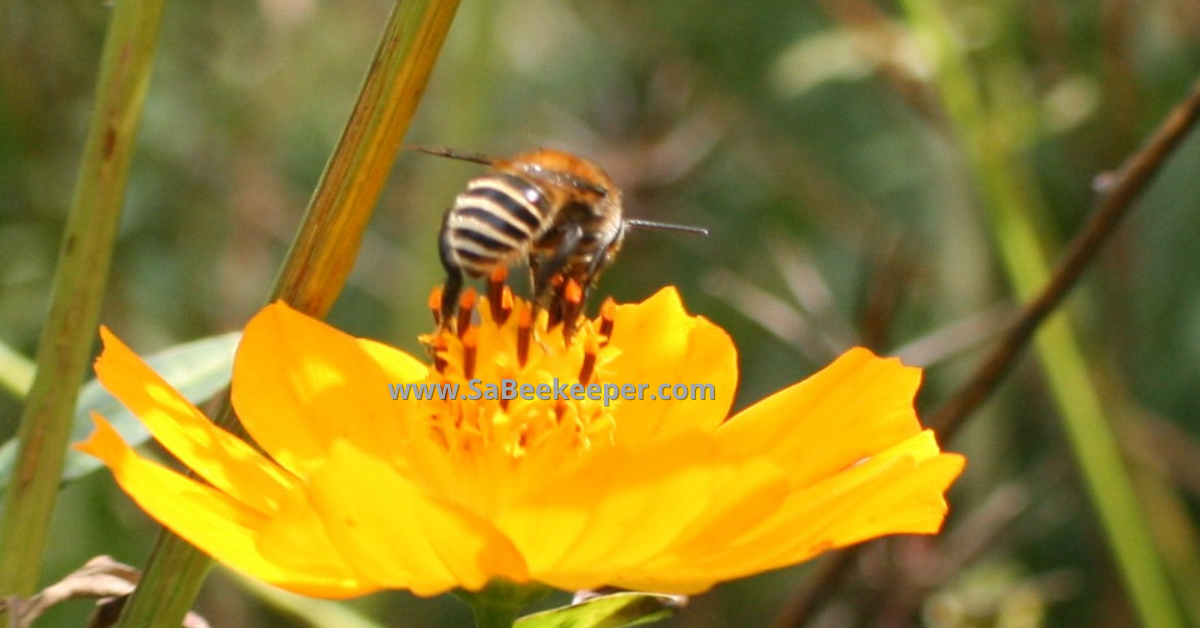
Striped tail end but not that hairy, as I was concerned that she wasn’t a bumblebee as they are much hairier. Some of these plumipes species are much hairier.
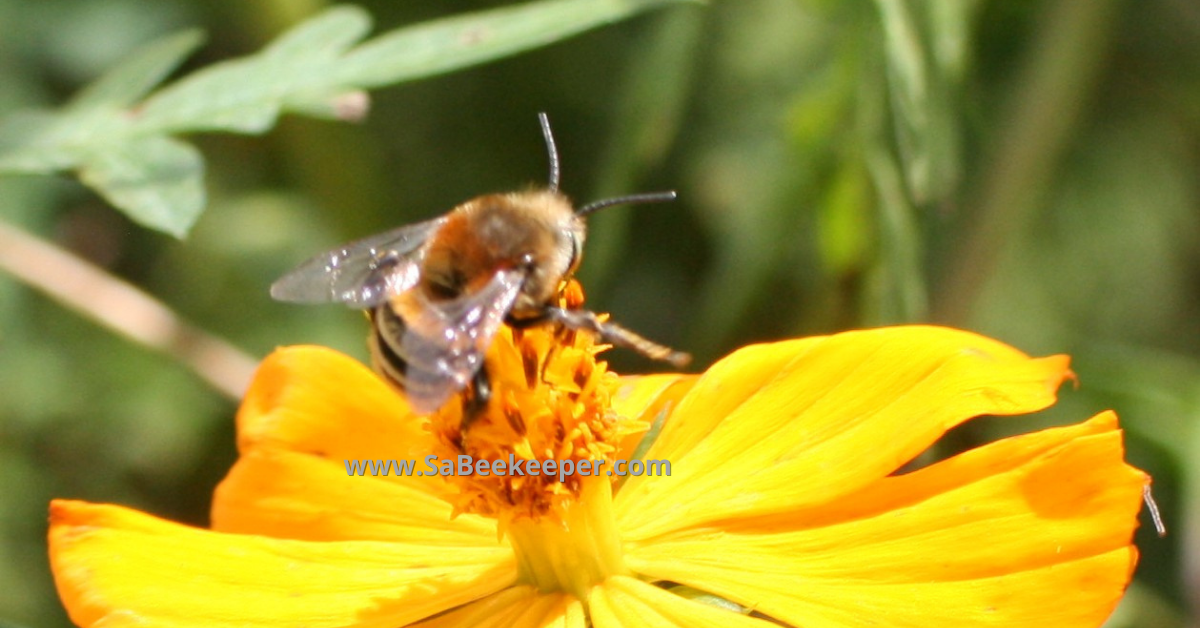
She was foraging on some yellow cosmos flowers for a time. There were three of these bees flying from flower to flower.
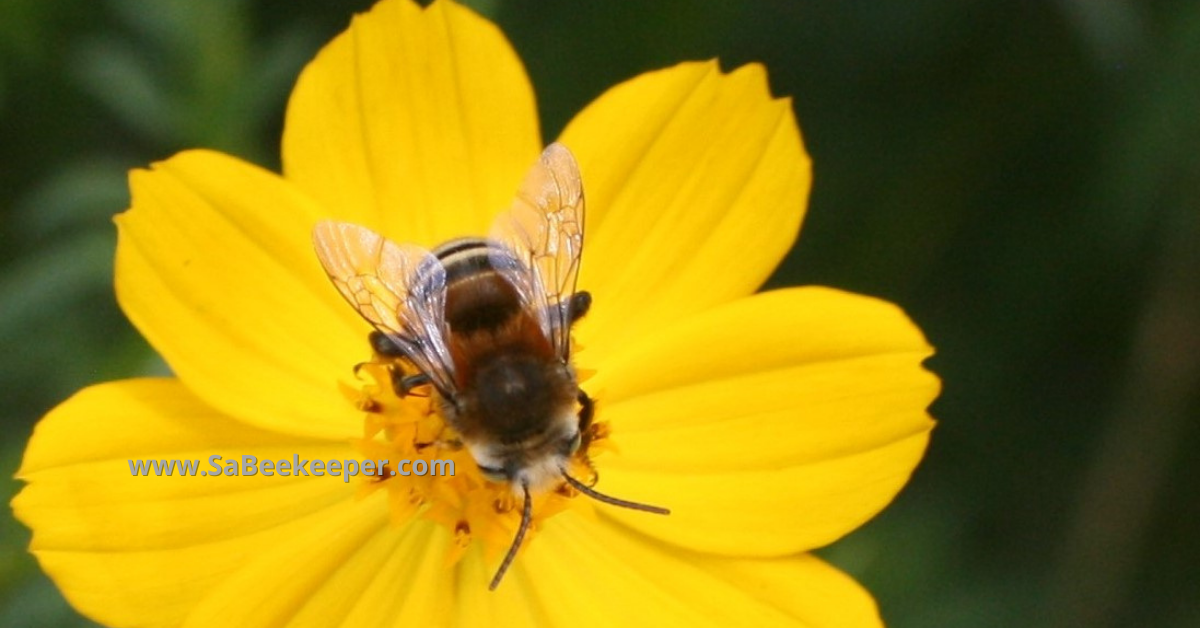
Almost taking off to the next flower.
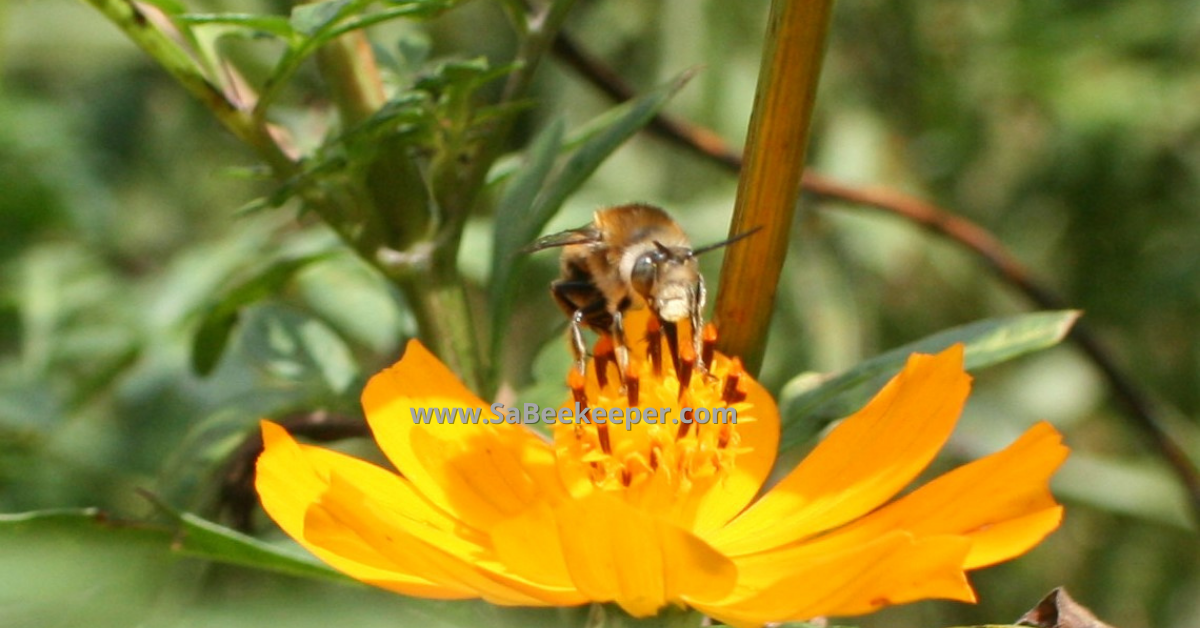
She is in the air off to forage on another flower.
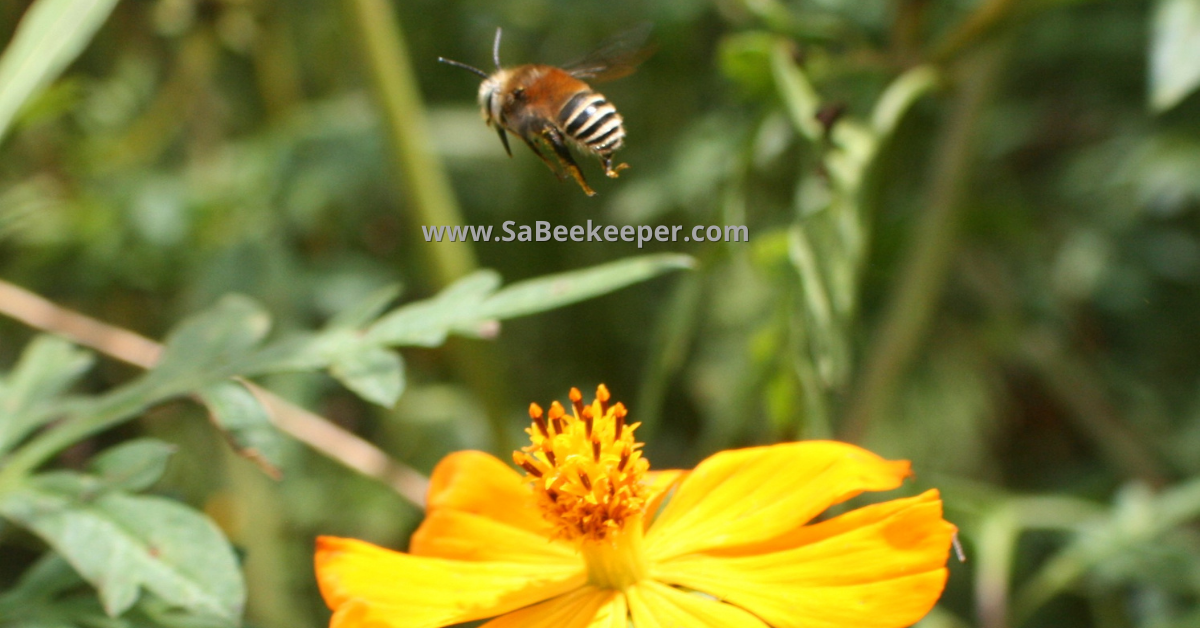
Very busy plumipes bee.
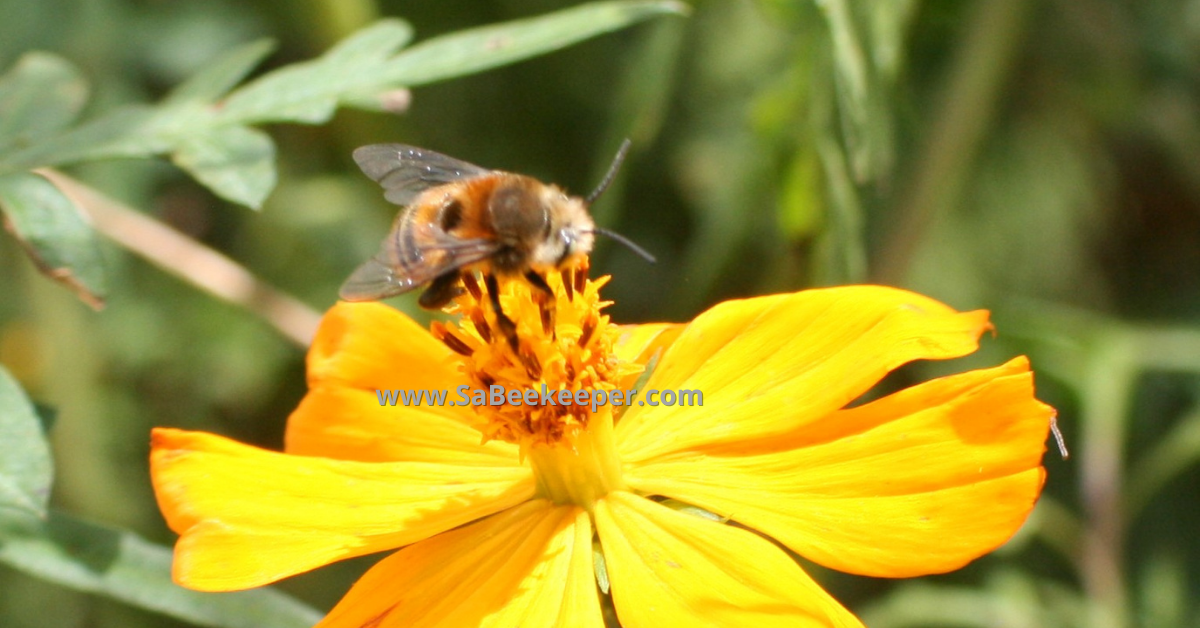
This hairy footed plumipes bee has an unusual face and trunk.
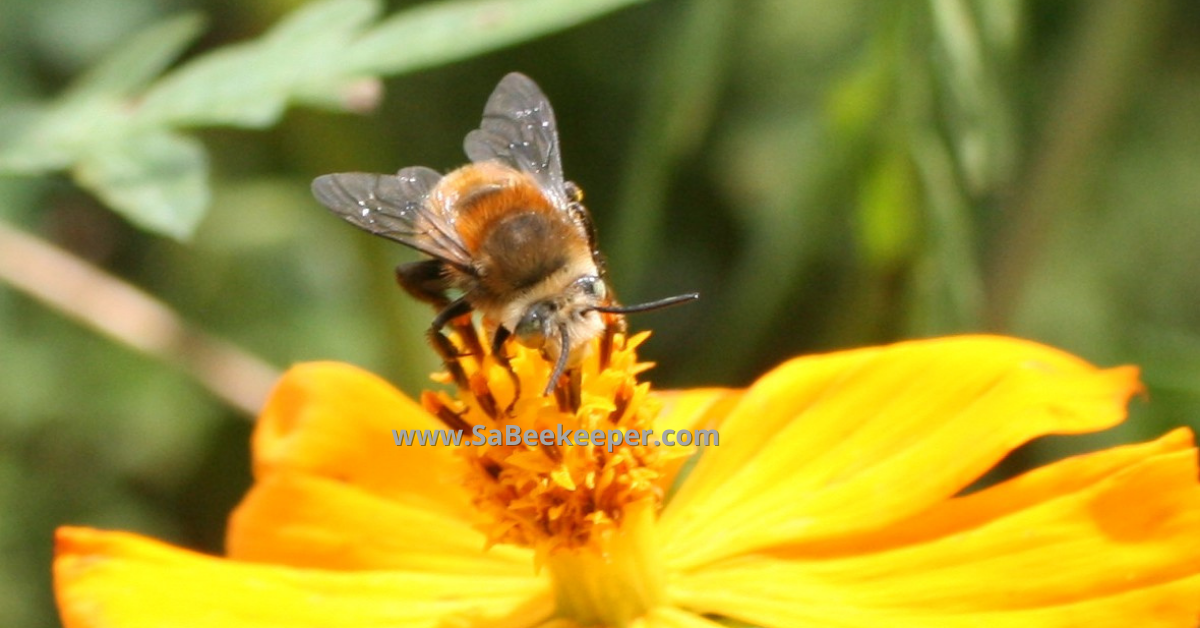
A side view of the plumipes bee showing all her features.
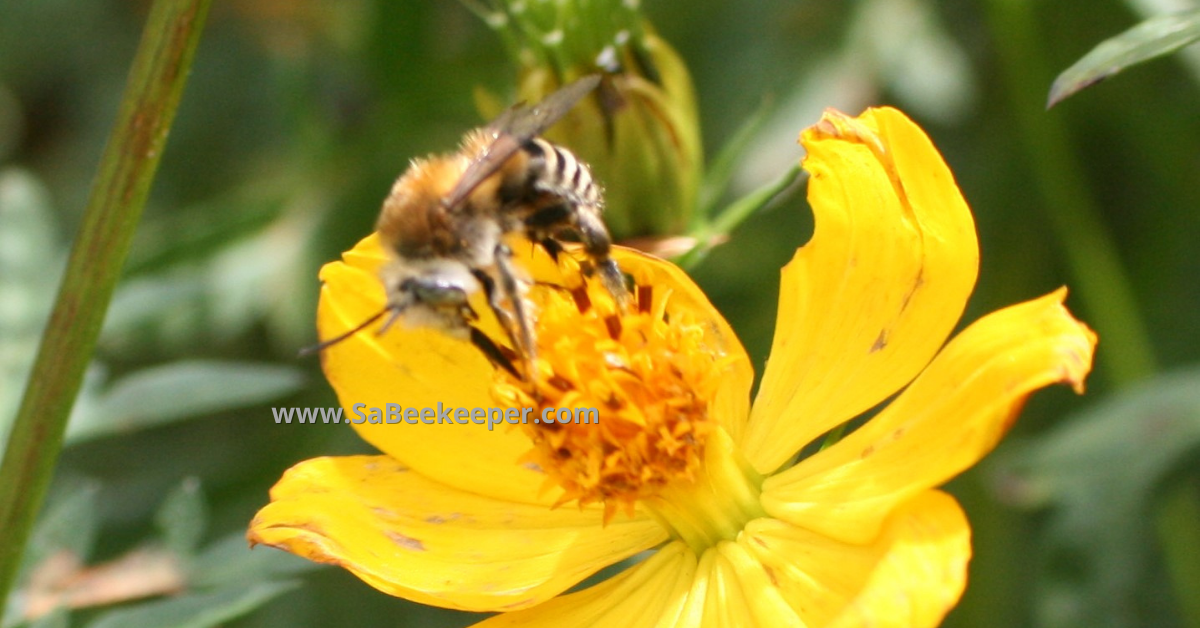
The ever popular cosmos flowers on the farm that attracts a lot of species of bees.
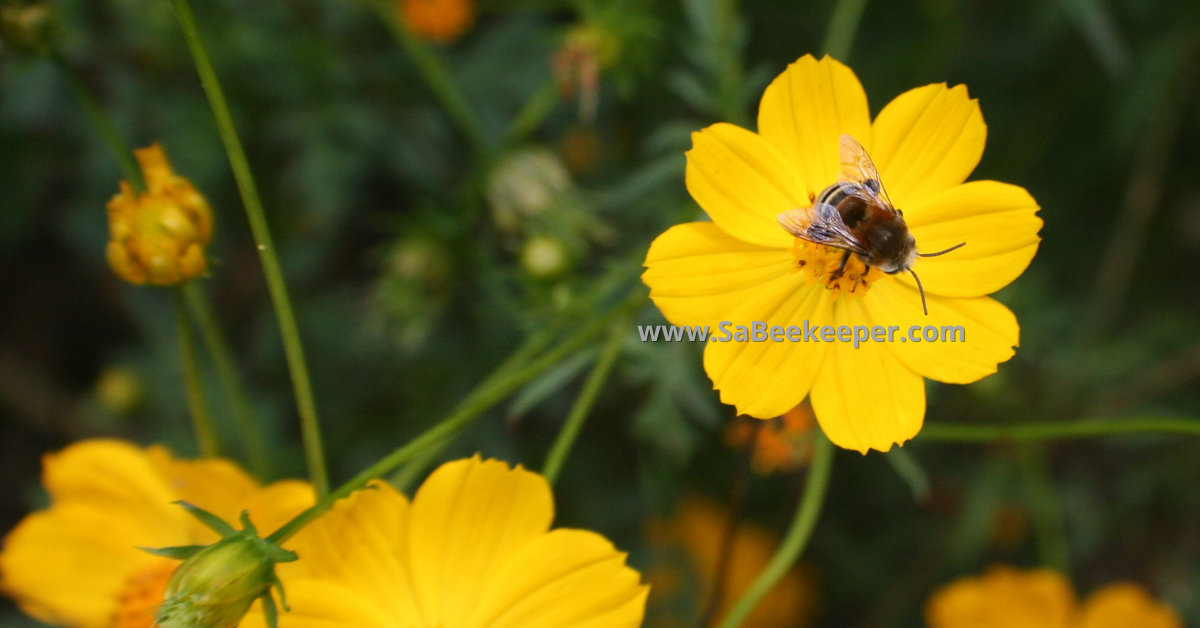
A subfamily Apinae digger bee species, of Australian blue banded bees. Looks almost like the blue banded bee. Not sure if the face and trunk is the same.
Male identification.
Males have most often bright reddish brown or gray hair, while females are usually all black or dark brown. Furthermore, the females show reddish orange scopal hairs on the hind tibia.. The middle legs of males are very elongated. Males are also distinguished from females by having long hairs on its mid tarsi.
Other stories on this wonderful bee( incorrectly named as a bumblebee) should be a Plumipes bee, subfamily of a bumblebee, below.
- Garden cosmos and Sa Bumblebee foraging
- South American Bumble Nesting Video included.
- Yellow striped tailed bumblebee Subfamily.
All species of bees are great pollinators and are so important.
Save the bees and learn about so many species so that you don’t eliminate them.
Leave a Reply